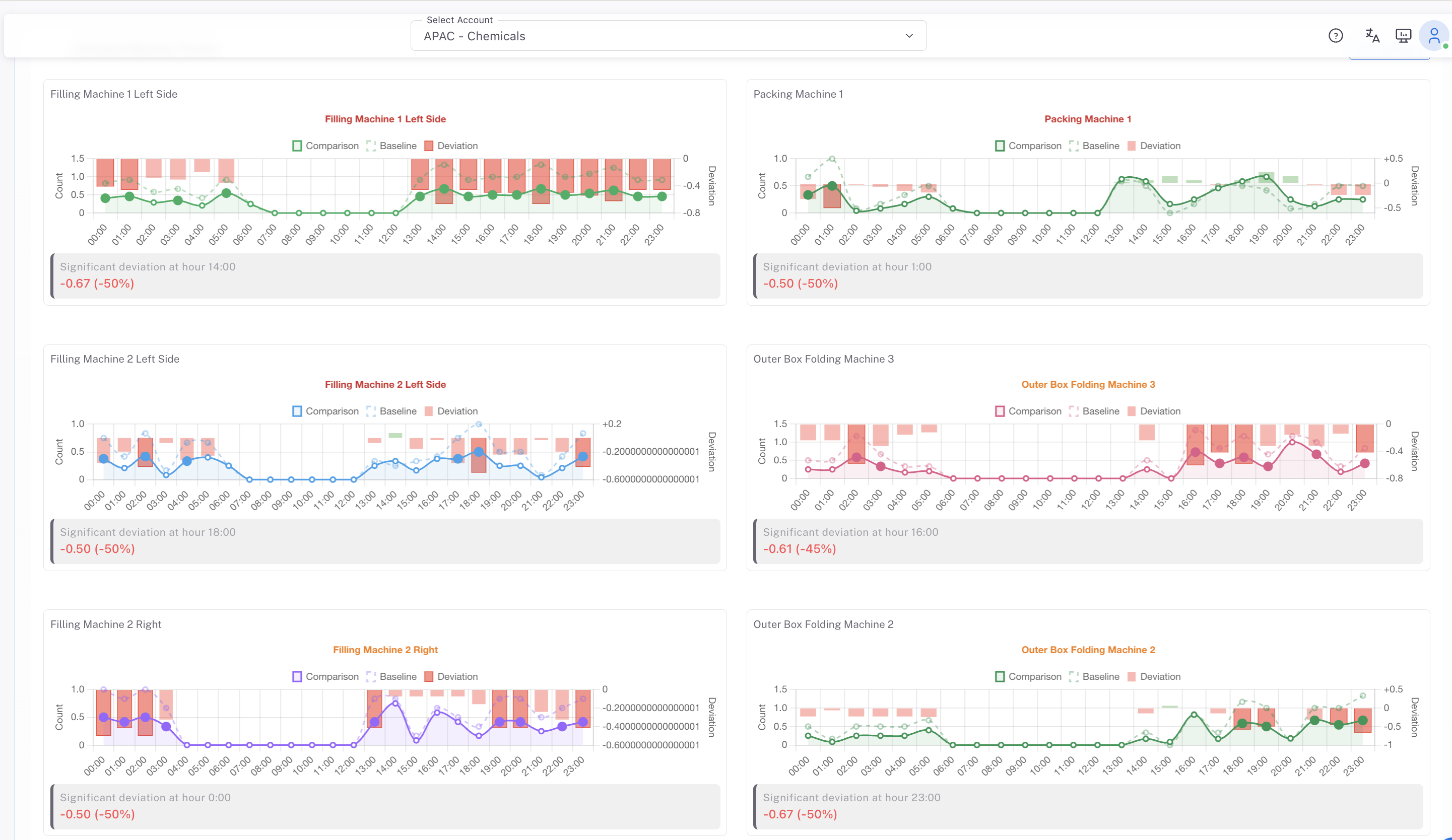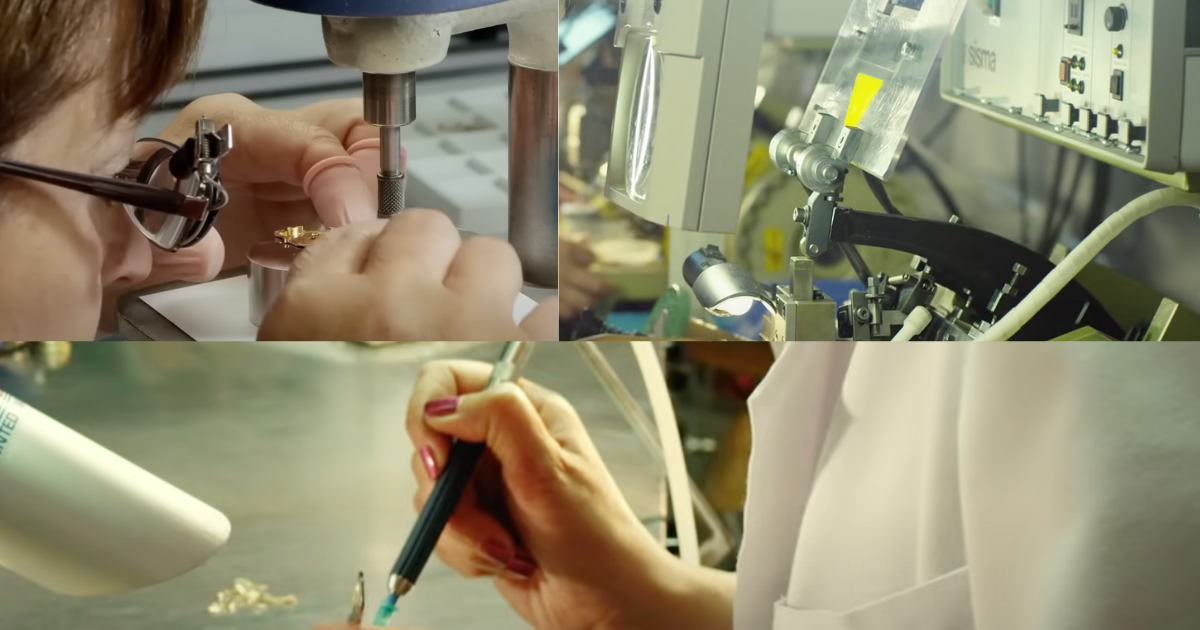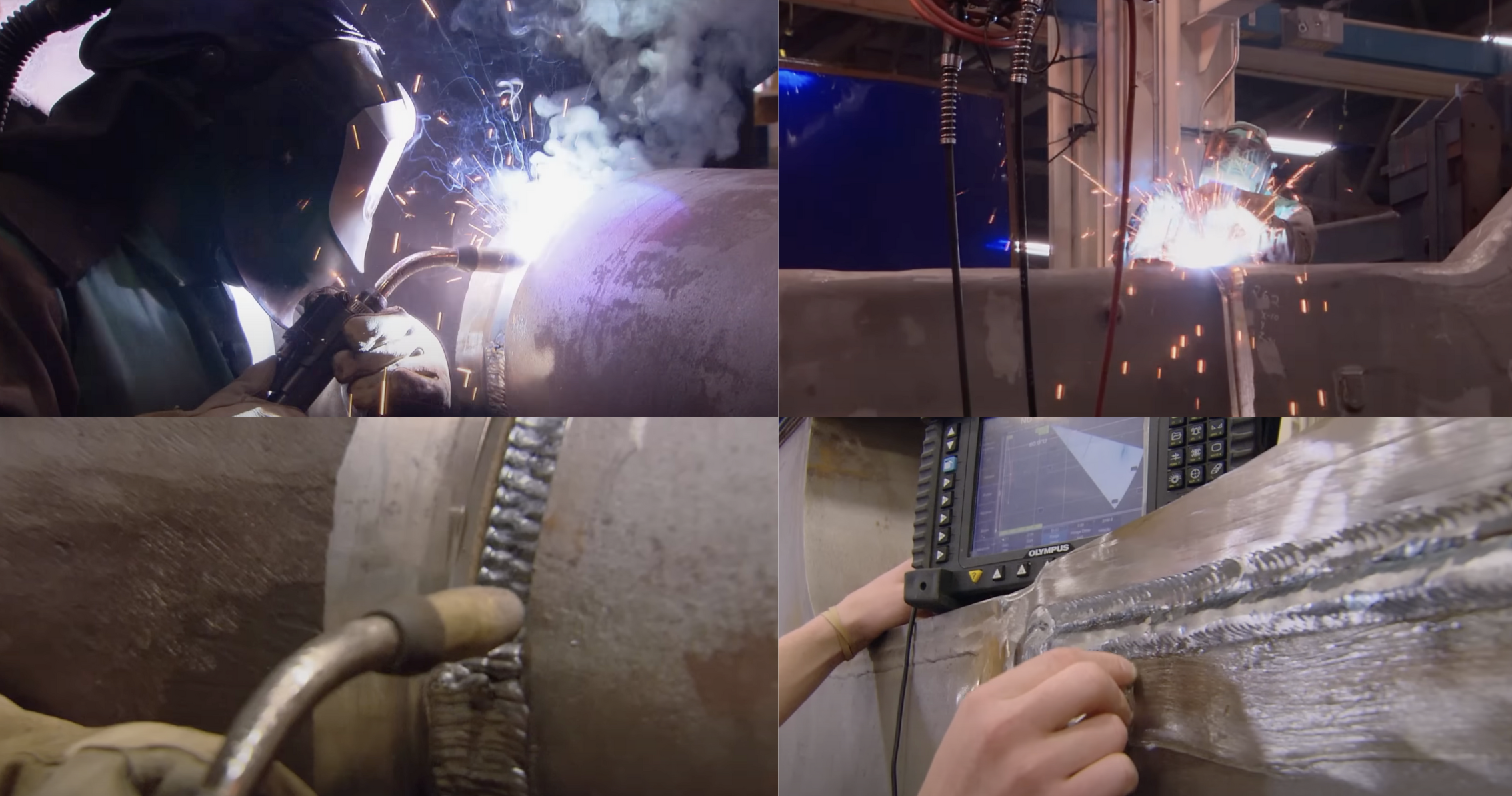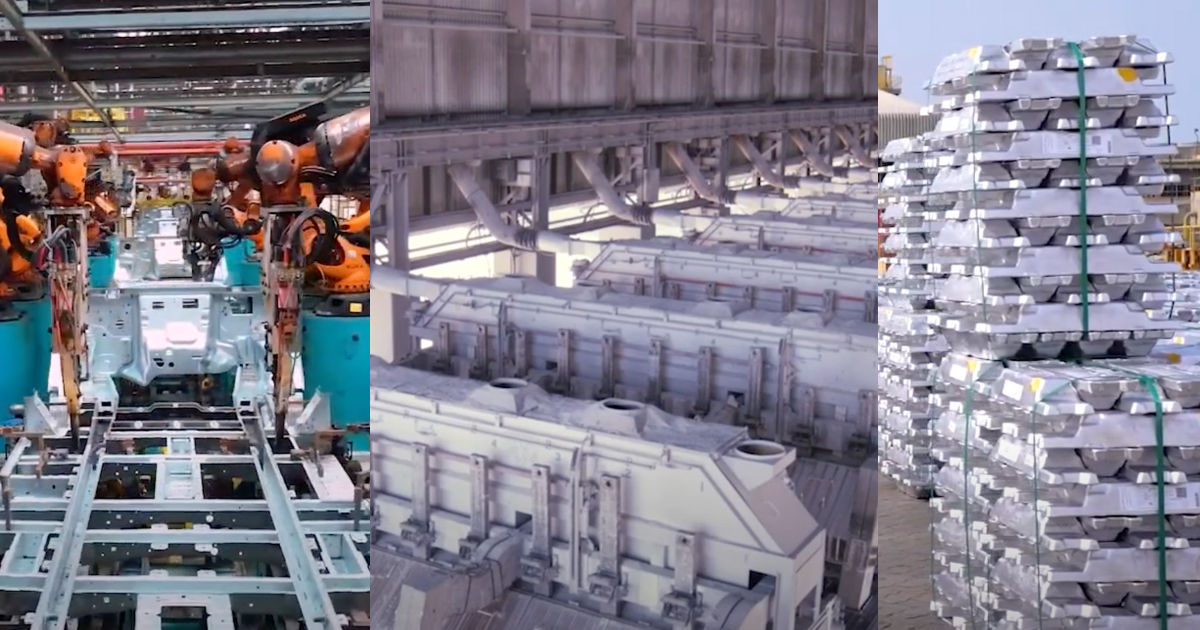
A small chemical factory encountered persistent inefficiencies in its folding stage, part of a broader multi-step production process. Initial interpretations suggested that operator discipline was the source of low machine runtime. In reality, deeper evidence showed that one folding unit was repeatedly underperforming due to service issues, leading to unproductive cycles and hidden inefficiencies.
Pattern monitoring provided the clarity needed. By analyzing people dynamics, machine performance, and yield patterns together, management could see that runtime metrics alone created a distorted picture. Multiple operator attempts confirmed engagement, yet the unit consistently failed to sustain production. Visualizations, heatmaps, and deviation analyses highlighted systemic reliability issues.
With this evidence, leadership took corrective action: initiating a plan to replace the problematic unit, redesign staffing allocation, and update monitoring rules to better differentiate between human effort and machine reliability. The outcome was improved efficiency, fairer workload distribution, and stronger alignment between daily operations and strategic goals.
The factory’s production process is organized into multiple zones:

Operators do not remain fixed in one area but instead move dynamically between zones depending on workload intensity, raw material characteristics, and machine availability. This flexible deployment is necessary but complicates monitoring. Machine uptime, staffing levels, and raw material quality interact continuously to shape production outcomes.

During regular operational reviews, leadership observed that one folding unit consistently reported lower runtime compared to its peers. On the surface, this appeared to be a matter of insufficient operator engagement.
Supervisors, tasked with meeting runtime goals, encouraged teams to maximize machine utilization. In practice, this meant the unit was kept running even when it failed to produce yield. Operators adapted by shifting real production efforts to the remaining folding units, while maintaining the appearance of meeting runtime expectations on the underperforming one.
This adaptation masked the true inefficiency. Runtime data looked acceptable, yet yield outcomes declined. Operators felt constrained by the metrics, and supervisors had limited visibility into the underlying issue.

When leadership introduced pattern monitoring, the situation became clearer. Instead of relying on runtime metrics alone, the new framework incorporated multiple streams of evidence.
[Insert Image Placeholder: People Dynamics Overview – Screenshot 4]

By combining people, machine, and yield data, leadership could see the misalignment:
This evidence reframed the issue from one of individual behavior to one of equipment reliability.

Armed with integrated evidence, management adopted a new approach.
The corrective plan delivered measurable improvements:
The case demonstrates several important lessons for factory leadership:



